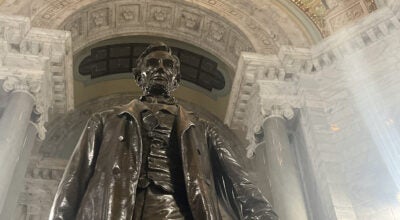Historic Kentuckians paved the way for modern surgery
Published 6:30 am Saturday, July 14, 2018
By STUART W. SANDERS
Kentucky Historical Society
For months, Kayla Rahn of Montgomery, Alabama, had contended with abdominal pain and weight gain. After repeatedly being told that she simply needed to lose weight, doctors discovered an ominous cause for her symptoms.
In late June, surgeons removed a 50-pound ovarian cyst from her abdomen.
“This is one of the largest I have ever seen or certainly removed,” Dr. Gregory Jones told reporters. “We are very excited things went well for her.”
While Rahn and Jones may not know the names of Dr. Ephraim McDowell or Jane Todd Crawford, they have these two Kentuckians to thank for the success of the operation.
In 1809, 46-year-old Crawford, a Green County resident, traveled to Danville to consult with Dr. McDowell. Like Rahn, Crawford had experienced weight gain and abdominal pain and had been told that she was likely pregnant with twins. McDowell soon discovered, however, that Crawford was instead afflicted with a massive ovarian tumor.
Crawford was, at least, in capable hands. Born in Rockbridge County, Virginia, McDowell’s family moved to Danville when he was just a boy. After studying medicine in Virginia and Edinburgh, Scotland, McDowell opened a practice in Danville. By the time Crawford appeared at his doorstep, McDowell had the reputation of being one of the greatest doctors on the Kentucky frontier.
At the time, it was believed that surgically opening the abdominal cavity would kill the patient. McDowell, however, understood that he needed to operate in order to save Crawford’s life. Therefore, on Dec. 25, 1809, he performed the world’s first successful abdominal operation when he removed Crawford’s 22-pound ovarian cyst.
With no anesthesia, Crawford sang hymns throughout the ordeal. Like Rahn, good news followed Crawford’s operation. Shortly after the procedure, Crawford was up making her bed. She fully recovered in 25 days and lived another 33 years, dying in 1842.
McDowell, who passed away in 1830, is now hailed as the “father of American surgery.” Statues of him in the rotundas of the Kentucky and U.S. Capitols honor his work.
McDowell’s surgical skill and Crawford’s survival changed how surgeons viewed the human body. It also paved the way for modern medicine.
Today, the Ephraim McDowell House museum in downtown Danville, the site where McDowell performed the operation, interprets his life and legacy.
Lauren Clontz, the assistant director of the Ephraim McDowell House, said that the 1809 operation is relevant to modern Americans.
“I think that everyone can relate to the story of this famous surgery on a very visceral level,” Clontz said. “It’s a very human story with an immediate impact.”
“There are a lot of frontier threats that today seem very distant,” Clontz added. “We don’t live in small cabins in the wilderness where we fight daily for survival. But one of the most feared things today is what Jane Todd Crawford was facing: the diagnosis. It’s so similar to what many people face today with cancer.”
In addition to drawing connections between the past and present, the site is also an important anchor for tourism in Danville and Boyle County.
According to Jennifer Kirchner, executive director of the Danville-Boyle County Convention and Visitors Bureau, tourists frequently visit the area to learn more about Kentucky’s pioneer history, including the story of Ephraim McDowell.
“Ephraim McDowell is one of our hallmarks,” Kirchner said. “The legacy he leaves connects us to bold ideas and inspires us to continue to make history.”
Rahn — and millions of other patients who have endured abdominal surgery —are fortunate that Dr. Ephraim McDowell and his brave patient, Jane Todd Crawford, made history. Thanks to McDowell’s skill and Crawford’s fortitude, these two Kentuckians forged an important path and saved innumerable lives.
Stuart W. Sanders is the Kentucky Historical Society’s history advocate.






